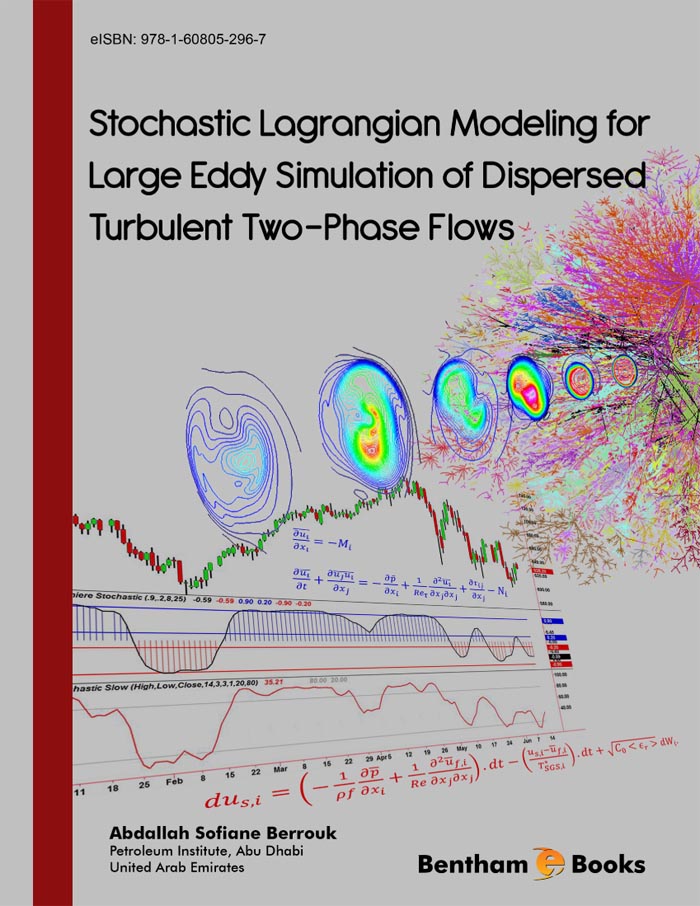Introduction
Understanding the dispersion and the deposition of inertial particles convected by turbulent flows is a domain of research of considerable industrial interest. Inertial particle transport and dispersion are encountered in a wide range of flow configurations, whether they are of industrial or environmental character. Conventional models for turbulent dispersed flows do not appear capable of meeting the growing needs of chemical, mechanical and petroleum industries in this regard and physical environment testing is prohibitive. Direct Numerical Simulation (DNS) and Large Eddy Simulation (LES) have become powerful tools for the investigation of particle-laden turbulent flows with the help of advances in computing resources. The hybrid Eulerian-Lagrangian approach plays a key role in predicting inertial particle dispersion and deposition. This ebook explains the use of stochastic tools to enhance the accuracy of the Eulerian-Lagrangian large eddy simulation of particle-laden turbulent flows of practical interest. The book should be a useful resource for chemical, mechanical, petroleum and environmental engineering postgraduates and researchers interested in applying tractable yet powerful numerical tools to solve problems involving multiphase flows.

